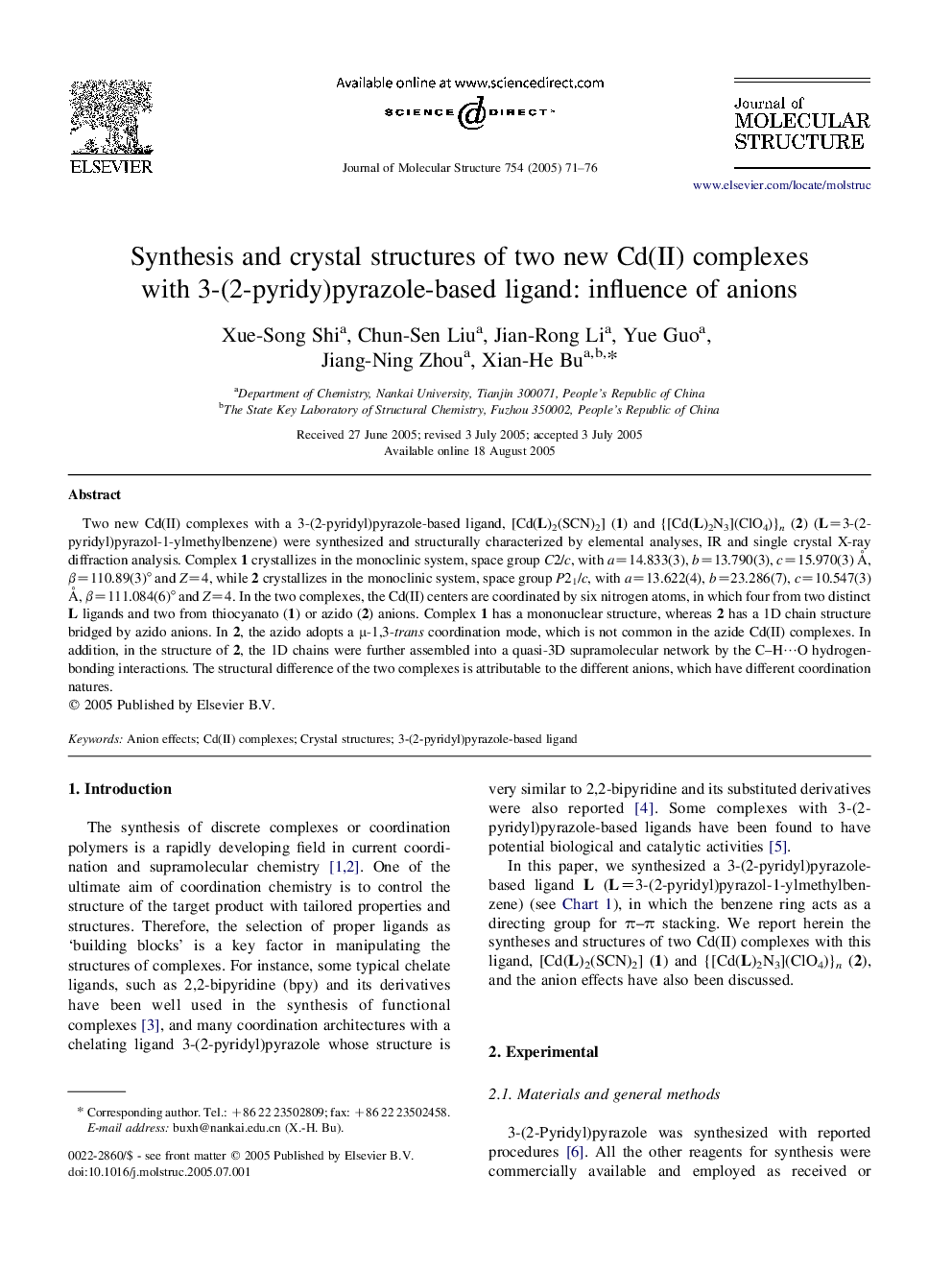| Article ID | Journal | Published Year | Pages | File Type |
|---|---|---|---|---|
| 9769840 | Journal of Molecular Structure | 2005 | 6 Pages |
Abstract
Two new Cd(II) complexes with a 3-(2-pyridyl)pyrazole-based ligand, [Cd(L)2(SCN)2] (1) and {[Cd(L)2N3](ClO4)}n (2) (L=3-(2-pyridyl)pyrazol-1-ylmethylbenzene) were synthesized and structurally characterized by elemental analyses, IR and single crystal X-ray diffraction analysis. Complex 1 crystallizes in the monoclinic system, space group C2/c, with a=14.833(3), b=13.790(3), c=15.970(3) Ã
, β=110.89(3)° and Z=4, while 2 crystallizes in the monoclinic system, space group P21/c, with a=13.622(4), b=23.286(7), c=10.547(3) Ã
, β=111.084(6)° and Z=4. In the two complexes, the Cd(II) centers are coordinated by six nitrogen atoms, in which four from two distinct L ligands and two from thiocyanato (1) or azido (2) anions. Complex 1 has a mononuclear structure, whereas 2 has a 1D chain structure bridged by azido anions. In 2, the azido adopts a μ-1,3-trans coordination mode, which is not common in the azide Cd(II) complexes. In addition, in the structure of 2, the 1D chains were further assembled into a quasi-3D supramolecular network by the C-Hâ¯O hydrogen-bonding interactions. The structural difference of the two complexes is attributable to the different anions, which have different coordination natures.
Related Topics
Physical Sciences and Engineering
Chemistry
Organic Chemistry
Authors
Xue-Song Shi, Chun-Sen Liu, Jian-Rong Li, Yue Guo, Jiang-Ning Zhou, Xian-He Bu,
